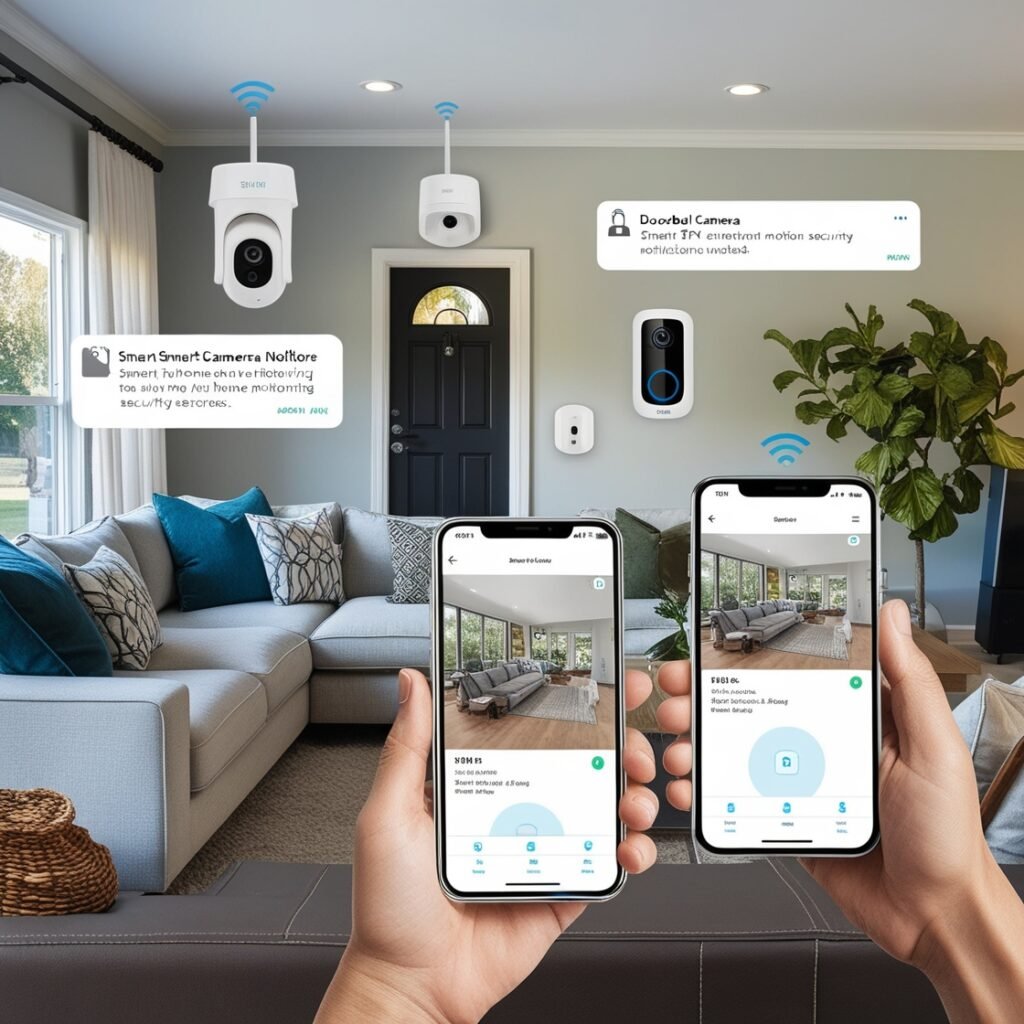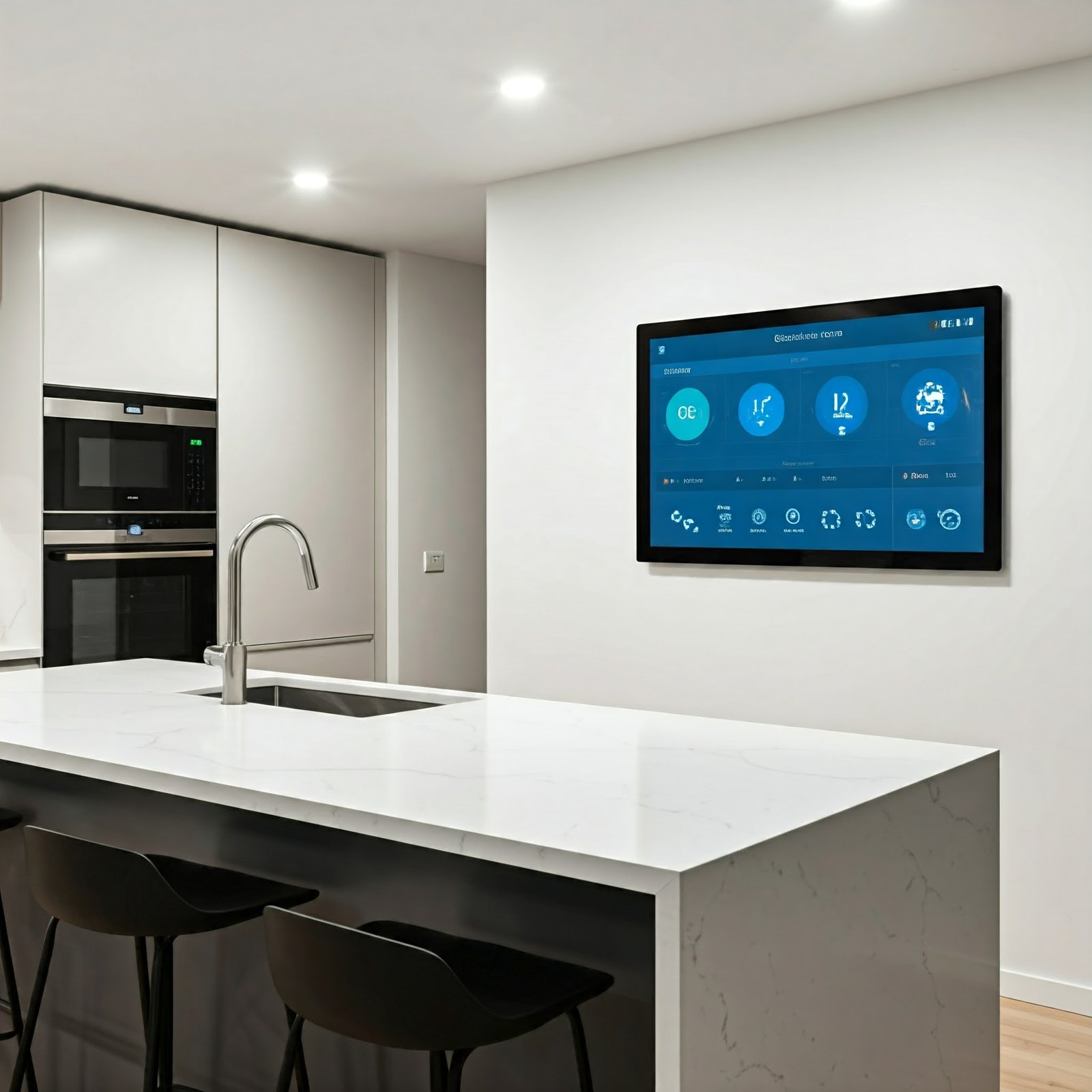Key Takeaway
- RTCs maintain accurate timekeeping, even during power outages.
- They automate appliance control, making daily routines easier.
- RTCs help reduce energy consumption by managing power efficiently.
Smart homes are all about making life easier through technology. Real-time clocks or RTCs can take a smart home to the next level by automatically scheduling appliances and saving on energy bills. An RTC has a tiny battery that keeps the time even when the power goes out. This allows smart home devices with an RTC to stay on schedule. Homeowners can program lights, locks and thermostats to run when needed, without having to manually turn things on or off.
RTCs also help optimize energy use. Air conditioners and heaters can be set to run only when people are home. Appliances like dishwashers run during off-peak hours to save money. By adding RTCs to controllers and devices, a smart home practically runs itself. Homeowners save time because they don’t have to manage everything.
What is a Real-Time Clock?
Credits : Muhammad Ansar
An RTC, or real-time clock, is a handy little chip that keeps the exact time, even when other power cuts out. It’s got its own tiny backup battery so it can keep ticking away until the regular power comes back on. (1)
This is super useful for smart home devices that need to know what time it is. Lots of gadgets use schedules to turn on and off automatically at certain hours. Like if you want your lights to slowly brighten before your alarm goes off in the morning.
The RTC makes sure all your smart devices have the right time no matter what. It helps things like thermostats adjust the temp throughout the day to keep your energy bills low. Or security systems can arm at night while you sleep thanks to the RTC.
Basically, this little clock is behind the scenes keeping everything synced up so your whole home runs smoothly on a schedule. Whether it’s turning things on when you need them or conserving power when you don’t, the real-time clock makes automated living a breeze.
Applications of RTCs in Smart Homes

RTCs Automate Appliances for Convenience
These little clocks can schedule things like lights, fans and coffee makers to turn on and off automatically. No more worrying if you left lights on – they’ll come on right at 7 PM like clockwork. And imagine waking up to a fresh pot of coffee brewed just for you. (2)
They Manage Energy for Savings
RTCs help devices use less power by going into low-power mode when not needed. A smart fridge can dim its screen overnight, for example. They can also run big energy users like washers at cheaper off-peak hours. All these little optimizations add up to lower bills over time.
RTCs Help Track Home Activities
Ever wonder if the robot vac ran like it was supposed to? RTC event logs have you covered. They timestamp everything so you’ll know exactly when motions sensors triggered or doors opened while away. These logs also make it easy to stay on top of chores.
Real-Time Clocks Integrate With Voice Assistants
Now you can ask smart speakers simple questions like “what time is it?” and get an instant, accurate response. Plus, you can set customized routines with commands like “goodnight” to lock everything up for the evening with just your voice. The RTC keeps these systems communicating in real time.
Some Things to Consider with RTCs
To use an RTC in a smart home setup, you’ll need a few key things. First up is the RTC module itself. A popular choice is the DS3231 for its accuracy and reliability.
You’ll also need a microcontroller like an Arduino to act as the brain. It sends signals based on the RTC’s time to control other devices.
Relay modules are important too. They safely switch high-voltage appliances on and off using the microcontroller. This lets you control lights and fans without directly connecting to mains power.
Finally, some user interface bits like buttons and displays make it easy to check the time and change settings. Put together, these components create an automated system.
Power management is also something to think about. RTCs have a small battery as backup so the time is kept accurate even if the power goes out for a bit. This battery usually lasts a few years. Be sure to check it periodically to make sure everything keeps working smoothly.
And some RTC modules have low-power modes too. This helps extend that backup battery’s life, which is great for energy-saving smart homes that rely on their RTCs. Proper power handling means your schedules and routines won’t miss a beat.
Potential for RTCs Going Forward
As technology advances, RTCs will keep getting smarter too. For example, integrating them with WebRTC allows different smart devices to communicate directly with each other much quicker. This means home systems will respond even faster to commands.
RTCs may also gain handy new features in the future. They could have WiFi or Bluetooth built right in, making it easier than ever to control your home on the go from your phone. No more running to switch things manually.
Energy management is another area ripe for growth. Down the line, RTCs may learn your habits to optimize settings automatically. Imagine coming home to a warm house without lifting a finger. Efficiency will hit new levels, putting more cash in your pocket too.
Overall, RTCs seem primed to take on a bigger role as smart homes evolve. Their improved integration and learning abilities will push convenience and savings to greater heights. Best of all, all this potential means you’ll gain even more control over your automated abode from anywhere.
FAQs
How does a real time clock (RTC) module help smart homes keep track of time?
An RTC module is a low-power chip that keeps track of the current time, even when the main power is off. In smart homes, it helps devices know the exact time for scheduling tasks, like turning on smart lighting at a specific time. This is crucial for IoT devices that need to work together and perform actions at precise moments, improving the overall efficiency of smart home technology.
What’s the connection between RTCs, IoT technology, and energy consumption in smart homes?
RTCs play a key role in managing energy consumption in smart homes. They allow IoT devices and smart appliances to operate on schedules, reducing power consumption when not needed. For example, an RTC can tell a smart thermostat to lower the temperature at night or when no one’s home. This smart use of time helps cut down on energy use, making homes more efficient and saving on power bills.
How do RTCs work with NTP servers in smart home setups?
RTC modules in smart homes often work together with NTP (Network Time Protocol) servers. When internet connectivity is available, smart home devices can sync their RTCs with these servers to ensure super accurate time. If the internet goes down, the RTC keeps running on its own, using very little power. This combo of RTC and NTP makes sure smart home devices always have the right time, even during internet outages.
Can you explain how to set up an RTC module using Arduino IDE for a smart home project?
Setting up an RTC module with Arduino IDE is pretty straightforward. First, connect the RTC to your Arduino board using jumper wires. Then, in the Arduino IDE, you’ll need to write some code to set the time and read it. You can use libraries like RTClib to make this easier. Your Arduino code might include commands to set the time, read the current time, and maybe control a relay module based on specific times. Use Serial.print to see the time in the serial monitor as you test your setup.
How do RTCs contribute to the development of smart real estate and connected devices?
RTCs are becoming a big deal in smart real estate. They help create homes that can do things automatically based on time. Imagine curtains that open at sunrise or a coffee maker that starts brewing just before you wake up. These connected devices, all synced to the same time thanks to RTCs, make homes more appealing in the real estate market. They offer convenience and can even help save on energy costs, which is a big plus for homebuyers looking for smart, efficient living spaces.
What role do RTCs play in edge computing for smart homes?
In smart homes, RTCs are super important for edge computing. Edge computing is about processing data close to where it’s created, instead of sending everything to the cloud. RTCs help smart home devices make quick decisions based on time without always needing to check in with a central system. This means your smart doorbell can decide when to turn on lights or your security system can arm itself at night, all without lag or needing constant internet connectivity.
How do RTCs improve real time communication in smart home systems?
RTCs are key to smooth real time communication in smart homes. They make sure all your smart devices are on the same time schedule. This is super important when you want different parts of your home to work together. For example, if you use a remote control to turn on your TV, your smart lighting system knows exactly when to dim the lights for movie time. RTCs help all your connected devices talk to each other and respond right away, making your smart home feel more responsive and in sync.
What are auto renewal packs in relation to RTCs and smart home devices?
Auto Renewal packs are a feature in some smart home setups that work with RTCs. They’re like automatic updates for your devices’ time settings. These packs can include things like daylight saving time changes or even updates to improve how your RTC works. They help keep your smart home devices running smoothly without you having to manually update the time on each gadget. This is especially handy for homes with lots of connected devices, making sure everything from your digital clock to your smart appliances always shows the right time.
Conclusion
RTCs are a smart addition for any home. As their timekeeping abilities automate appliances and routines, daily life becomes easier. And by optimizing schedules, they help reduce energy costs too. As both homes and technology advance further, expect RTCs to keep leveling up as well. Their potential makes integrating one well worth it for enjoying all the benefits of an automated abode.
References
- https://ecsxtal.com/what-is-a-real-time-clock-rtc/
- https://marobotic.com/2023/12/08/real-time-clock-based-automatic-home-appliances-control/


